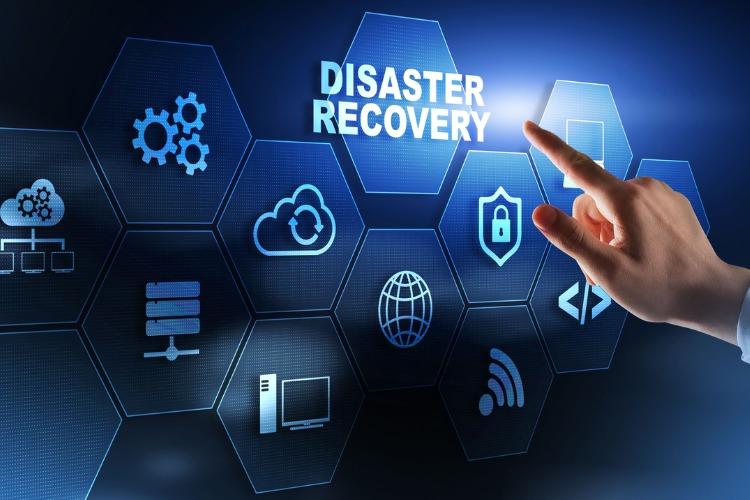Are Your Business Disaster Recovery Measures Sufficient?
Not too long ago, we could have summarized disastrous and unexpected events for a business as 'theft, fire, or flood' because these are the only significant risks that could bring down a business for good.
Today, however, businesses are more likely to suffer digital disasters they cannot recover from.
A few examples of apocalyptic disasters to a business are sudden and catastrophic loss of access to critical information, ransomware attacks, service provider failure, and severe data breaches. According to the Federal Emergency Management Agency (FEMA), 40% of small to medium-sized businesses never reopen after a disaster. Among those who manage to reopen, 41% fail within a year. Notably, 93% of businesses without a Disaster Recovery Plan also fail within a year should they suffer a major data disaster, according to PhoenixNAP.
These figures highlight the critical need for a business of any size to have a recovery strategy should the worst happen.
But what does it mean to have a disaster recovery plan? Even if you have a disaster recovery plan in place, how sure are you that it will save your business? Read on to find out.
Define 'Disaster' From Your Business's Perspective
The term 'disaster' may refer to different events depending on the size and nature of the business. To define what a disaster is to your business, highlight all the natural and man-made disasters that could severely impact the business's everyday operations.
A practical way to define a disaster to make a plan to counter it is to define your business's critical assets such as products, customer and employee data, ERP systems, and marketing plans. Next, classify the assets into three: business-critical, important, and non-critical. This will help you better understand what the business needs to recover from potential disasters.
What Makes a Good Disaster Recovery Plan?
When a disaster happens, the focus will be on recovering the most business-critical systems first. Be sure to read more about IT asset recovery for tips on how to prioritize and recover your critical assets. A good disaster plan should prioritize assets based on their Maximum Tolerable Downtime (MTD). This is the longest time the business can survive before the asset is recovered. Analyze the Recovery Time Objectives (RTOs) of your disaster recovery plan to ensure that enough focus is placed on recovering business-critical assets first.
Your Business's Disaster Recovery Plan should be a formal document created to protect and recover the organization in its entirety from all types of disasters. It must be easy to understand and implement, but more importantly, you must customize it to the business's specific needs. The typical elements of a solid disaster recovery plan include:
1. Lists Disaster Recovery Team
A disaster recovery team is responsible for creating, testing, maintaining, and implementing the recovery plan. It should list the team members, each with defined responsibilities and contact information. You must inform all employees of the business of their responsibilities and whom to contact when a disaster occurs.
2. Identifies and Assesses Disaster Risks
The disaster recovery team is responsible for identifying and assessing potential disaster risks to the business. These must cover natural events, man made emergencies, and technology-related incidents. Proper identification and assessment of potential disasters go a long way to help the disaster recovery team plan the best recovery strategies.
3. Prioritizes critical resources, applications, and documents
Your disaster recovery plan must prioritize business-critical, important, and non-critical resources, applications, and documents. The plan should then revolve around establishing short-term survivability in the event of a disaster. A more long-term restoration plan should aim at restoring the business's full functioning capacity.
4. Specifies Off-Site Backup and Backup Procedures
The disaster recovery plan must identify what data to back up, the location to back them up, by whom, and the steps of performing the backup. Where possible, backup of business-critical and important data should be automated to one or more remote locations.
5. Properly Tested and Maintained
Contrary to what most entrepreneurs believe, disaster recovery is not a one-off event but a continual process. To verify plan viability and effectiveness, you must testall important disaster recovery scenarios against all threats and potential disasters.
Schedule Disaster Recovery Plan Edits and Follow-Ups
The operations and data of any modern business change constantly. It is never enough to have a single disaster preparedness test or plan. Schedule regular team sessions to edit and follow up recommendations. This will ensure that your business is minimally impacted by a major disaster when it occurs.
Business-critical and important documents and business processes, in particular, must be tested and reviewed regularly. The frequency of the tests and reviews may vary depending on the nature and size of your business. As a rule of thumb, the disaster recovery team should meet and review the plan at a minimum of once every 12 months.
Conclusion
The only worse thing for a business than suffering a severe disaster without a disaster recovery plan is to suffer a severe disaster only to find out that their plan is not good enough to 'recover' the business. So, now that you have an idea of what a good business disaster recovery plan entails, is your business's disaster recovery plan good enough?

